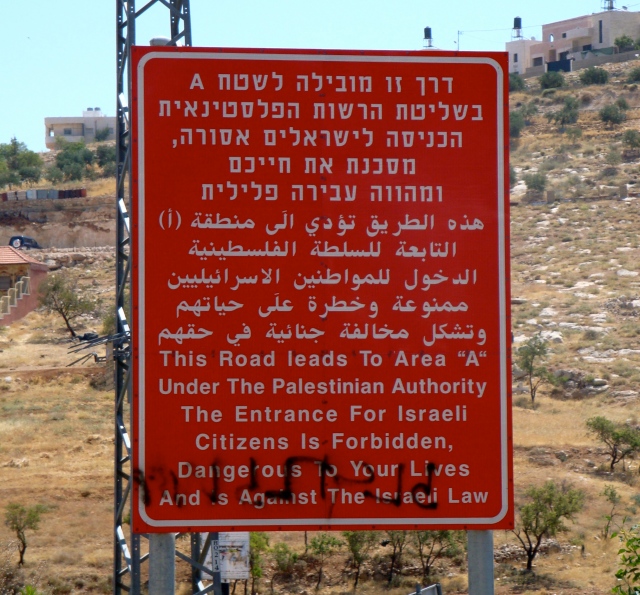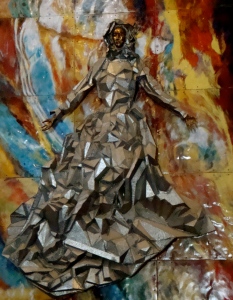Been distracted from blogging lately, happens sometimes. No better way to close a life-chapter than a semi-therapeutic holiday diversion with my Mother. Thinking the world holds somewhat limited destinations to amuse and captivate both of us, I decided on Israel and Jordan. Short flight from London, loaded with culture and history, and the Holy Land has assembled an abundance of churches.
Learning from my last foray into parental travel, I reserved one hotel in each country to establish a base, instead of one or two nights per place (like I had done in India). Immeasurably easier on both of us to gain familiarity with the staff, know how breakfast worked, unpack our belongings, and fashion a temporary home. I also embraced my role as chief planner, negotiator, money changer, excursion organiser, and general-person-in-charge. For her part as my travel companion, I witnessed people going out of their way to treat us both with kindness and respect (I would have been far more self-conscious as a lone female traveller in either country).
Landing in Tel Aviv, we headed straight to Jerusalem, the Holiest City in the centre of the Holy Land. Historically turbulent, the Holy Land refers to all of Israel and the Palestinian Autonomous Territories, and parts of Jordan and Egypt. Given the dimensions of Israel, 290 miles long, 85 miles wide at its widest point and 35 miles wide at its narrowest point, determined travellers with limited time can visit a lot of the country. From our charming hotel, the American Colony, once home to a wealthy Turkish merchant and remodelled borrowing Arabian architecture and Ottoman decor, we started our expedition. Driving north towards the coastal towns of Haifa and Akko, we stopped in every beautiful church from Nazareth to the Sea of Galilee. The next day, we explored the West Bank [of the River Jordan] from Jericho to Bethlehem, ending with a dip in the Dead Sea at Kalia Beach.
On day three we embraced Israel’s capital city. In Mark Twain’s commentary about Jerusalem he wrote in Innocents Abroad (1895), “There will be no Second Coming. Jesus has been to Jerusalem once and he will not come again.” Funny, harsh, wrong. Jesus spent a week, the prophet Muhammad (PBUH) just one night, nevertheless a person could spend a lifetime discovering and studying Jerusalem.
Here are my top five experiences:
1. Western Wall (Wailing Wall), Old City – The holiest place in Judaism and the last remnant of Herod’s Temple on the western side of the of the Temple Mount which would have housed the Holy of Holies (Arc of the Covenant).
2. Rooftop Walk, Old City – After getting lost strolling through the four Quarters (Armenian, Christian, Jewish, Muslim), the maze of souk-lined streets, and the Via Dolorosa interspersed with sacred religious landmarks, find and climb the narrow iron staircase off St. Mark’s Road to be rewarded with views of alleys below and city-scape above, particularly the Dome of the Rock at sunset from the unique perspective of residential roofs.
3. Church of the Holy Sepulchre, Old City – Believed sight of Christ’s Crucifixion, burial and Resurrection, now allotted to six denominations: Greek Orthodox, Roman Catholic, Armenian, Coptic, Ethiopian, and Syrian Christians (forget the Protestants, who knew there were so many sects from the Byzantine schism-side of the world). Sensibly, Muslims hold the key to the church and act as an intermediary for all those Christians.
4. Yad Vashem, New City – Yad Vashem means “a memorial and a name” and spending 45 minutes or 5 hours at this Holocaust museum will change you, your lens on the world. First walking through the children’s memorial, a path in darkness illuminated by 5 solitary candles and their millions of candlelight reflections that engulf you on every side, in flickering memory of the 1.5 million children killed. In the main building, the well-designed long corridor of exhibits affects with acute poignancy the dichotomy between efforts to humanize the victims, contrasted with the Allies’ attempt to evidence the horrors of the Nazi regime. Striking, sickening, powerful images, particularly of the concentration camps, quietly asking how you would want to be remembered, immortalised? At your worst, shaved and gaunt in depravity and despair, or in another way. With your family, in a photo from a wedding, or on a birthday as a patriotic German unaware of the upcoming brutalities that would accompany the Final Solution. I would choose the latter, the human. Easy to avoid this memorial, particularly whilst on a holiday, but don’t.
5. Mount of Olives, New City – On this eastern hilltop, visit the Jewish cemetery near the Valley of Jehoshaphat ready for the Day of Judgement, the Mosque of the Ascension, the Basilica of the Agonies with the Garden of Gethsemane, and the Church of Paternoster; plus catch spectacular panoramas of the Old City.
Our trip coincided with Pope Francis’ tour and despite efforts to stalk the Holy See (my Mother made me) via his official itinerary, an entourage of police accompanied by the force majeure of the Israeli Army repeatedly foiled even a glimpse. “Were you frustrated?” asked Amir, our Bein Harim guide, “Good, you would not truly experience the Middle East without feeling that!”
Amid the candy-store-mother-lode of things religiously significant to pilgrims of the Crescent, Cross, and Star, the co-mingling of ethnically diverse Israelis is the most fascinating aspect of the neophyte country. Lots of narratives, some aligned, some conflicting, and mixed with politics of a nation. Despite the prolific proclamations of partisan news media, you find truth in many stories; mostly people want a peaceful life.
Go Israel – Ministry of Tourism
Bit of Editorial (in my opinion); historical context and sorting out peace
Around 1200BCE the Philistines (Palestine means “land of the Philistines”) and the Tribes of Israel arrived in the area, living in harmonious co-existence under Hebrew Kings – Saul, David, Solomon. Yes, it’s true. Anyway, you may know the Jews are the chosen people. The chosen people. Perhaps that doesn’t resonate with you, and for me the statement barely registers. God chose the Jews, they are HIS people, good for them. However the statement infers that everyone else is not chosen by God, and some God-lovers (enter Christianity and Islam) may take an exception to that notion, and so emerges anti-Semitism. Add to that the desire to possess the precious Promised-Land where you can walk in the historically accepted footsteps of Abraham, Moses, Jesus, and Muhammad (PBUT). Three great monotheistic religions, hundreds and hundreds of years; pray, fight, repeat.
Shortly after the birth of the State of Israel in 1948, the neighbouring Arabs declared war on it. Israel’s territory got bigger utilizing might makes right expansion; no one questions the determined resolve of the Israeli Army. Still, lots of free space in this postage-stamp of a country that has an outsider humbly asking, why are you fighting over this mostly barren, yellow-brown rocky desert? Even now, everyone wants the fertile spots, the revered Holy spots, and most importantly to conquer-acquire Jerusalem.
One side, the Western-friendly side, would argue there was nothing on any of this land 150 years ago, [read as, well done Israel]. Further, the population of Israel is 8 million while the populace of surrounding Arab countries is around 217 million, talk about a hostile neighbourhood. The same neighbours who at one time collectively vowed to cast Israel into the sea. Then remember Yad Vashem (the Holocaust memorial); what country wouldn’t have a complex that manifests in exaggerated reactions and a preoccupation with survival. Side note: Did you know, there is no letter “P” in the Arabic alphabet, making it ironically impossible to say, “the state of Palestine” in Arabic.

What a sign. If I was Israeli, you’d have me at “forbidden” never mind dangerous to your life or against Israeli law – but we had no problems traveling and enjoyed visiting towns in the West Bank
The other side may contend Israel has become a tiny, tyrannical bully. For example, the Israeli settlements in the West Bank expanded as recently as 2012 [and continued in 2017] despite being considered illegal under intentional law. Ma’ale Adummin, one of the largest Israeli settlements in the West Bank, is a self-contained community built for purpose to supply affordable housing in close, commutable proximity to Jerusalem. Taking the land, building lovely villas on a hilltop overlooking Jerusalem in a guard-gated community in the West Bank. Now why would that annoy Palestinians. Moreover, why should Palestine remain stateless?
Of course the Middle East situation is complex. Historical hurt, unhealed war-time wounds, difficult to forgive or forget. Current events still prompt a default response of violent rhetoric along with an-eye-for-an-eye escalation, and no one wants to give in (in the weak sense of concession) to the other side. Perhaps those who continue to want war and unrest, profit from both. Regardless, pray for peace in the Middle East, it is time.

























